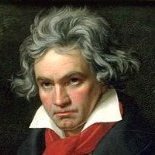-
Posts
41 -
Joined
-
Last visited
Reputation
3 NeutralRecent Profile Visitors
1,550 profile views
-
Recently, I cannot copy events from one track and paste special to another without everything in all tracks being pushed over to the right. It's acting about the same as if I inserted time into the project. I imagine there is some erroneous combination of radio buttons that are checked or unchecked which is causing this behavior but I can't figure out what I'm doing wrong. Specifically, I use the select tool, highlight notes in one track (Piano, Track 2), copy with Ctl+C and then hit Ctl+Alt+V. At that point I select the track into which I want to past the clip (Trombone, Track 10) and then the problem occurs. I am used to doing this and it's maddening that I am currently forced to reenter all the notes. Has Sonar behavior changed in some recent upgrade or is there a proper set of radio buttons that should be checked or unchecked for this to work?
-
Thank you, Amberwolf. I should have mentioned that I'm using external hardware and have everything connected to a speaker system through a FocusRite USB audio interface. The song has ritards and accelerandos and it just would be nice to imitate what's in the MP3 file, which is a performance of the piece that the music publisher posted to their website.
-
I have a project with voice & piano in MIDI, which I opened in Cakewalk Sonar (version 2025.09). I added an audio track and imported an MP3 file. I want to set the project's tempo map to what's in the MP3 file and am having trouble finding the documentation on how to do this, although I understand this is a feature that's supposed to work. I opened the audio snap dialog box or window and am stuck at that point. An internet search says to drag the clip to the "Time Ruler" but I don't even know what or where that is. If someone has success doing this, please advise how to proceed. The MP3 is attached. I own the music and just want to mimic the performance tempos in the Sonar file. I doubt that it matters but the key of the MP3 file is not the same as the key of the MIDI data and yes, I know the audio can't be played at the same time. I only want to use the audio to create a tempo map. Thank you UCG Musician 18-as-long-as-i-have-breath.mp3
-
Is there a better way to enter notes in Staff View than selecting note duration in the Draw Tool? It is taking me far too long to enter music through this method (the only one I know). I'm not looking for a punch and entry from MIDI keyboard because the results are never in proper rhythm and have to be quantized to get correct durations. That's as cumbersome as the first method.
-

Realistic Trills & Grace Notes
UCG Musician replied to UCG Musician's topic in Production Techniques
Thanks to Amberwolf, kitekrazy1 and Canopus for responding. My hardware is old but is theoretically good equipment. One synth is a Roland XV-5050 sound module which, despite is age, has very nice sounds. Its strings are of the slow/crescendo variety except for the non-sustaining heavy attack characteristic of the marcato string voice. Neither of these work for trills or grace notes. A second synth is a Korg Kronos 88 and it has a large number of factory string sounds plus several purchased string libraries that are installed. I'd expect to find something that works but it's the same sort of issue with its sounds as with the Roland's. I am hoping to learn of some note entry techniques that can overcome the idiosyncrasies of these typical string sounds. The music that I do is for church purposes and all the the equipment and music software are owned by my congregation, not me personally. It is highly unlikely that I'd get authorization to purchase any more libraries, particularly the good ones with sampled trills and string sounds that merely sustain without decay or crescendo. I'm still working on this and hoping someone has additional tips and tricks for me to try. -
I'm working on an orchestral score that utilizes trills (primarily in the violins) and/or grace notes. How can the notes be entered so they don't sound mechanical and — ideally IF POSSIBLE — don't take up vast amounts of notes in a measure so all the other longer duration notes (quarters, half notes, whole notes) are spread out? I hope this question makes sense. Specifically I want a trill over two tied whole notes to sound like it does when a violin section plays them, not like alternating 16th or 32nd notes. Similarly, grace notes appear before the note and there seems to be a trick to entering them so they sound realistic. In this particular case, I have a quarter note, followed by two eights, followed by two sixteenth-note grace notes followed by another quarter note. It all comes out sounding like a non-distinct blurring of sounds, not like music. Help! Does anyone have tips/experience on this?
-
Thank you! I figured it had to be something very simple.
-
I prefer tracks to be the minimum height because most of my projects have a lot of tracks. Is there a way to set the track height for all tracks in a project at once? Is there a way to set a default track height?
-

Repetetive Pedal Marking Placement
UCG Musician replied to UCG Musician's topic in Cakewalk by BandLab
It worked to copy the CCs from 1 measure to the next and then to copy the CCs from those two measures to the next two and so on. Thank you, Amberwolf. I also noticed that putting the pedal off right at the beginning of the next measure sounds much closer to an actual performance. So, thank you, David Baay. -
I am looking for a way to enter on and off pedal markings without placing every one individually, if there's away to do it. Near the beginning of each measure (like at one sixteenth note after beat one) I want a pedal-on control code and just before the end of each measure I want a pedal-off control code. The piece I'm working on needs these all over the place. Is there a way to do this en masse?
-

Cakewalk Can't Find ASIO Device Repeatedly
UCG Musician replied to UCG Musician's topic in Cakewalk by BandLab
Today, I restored the 18i20 to its factory settings again and was in the process of shutting down all applications before rebooting the computer. But before I did that, I thought I'd just try launching Cakewalk to see what happens. Lo and behold, it recognized the interface in ASIO mode and worked as normal. I did not switch to another USB cable or use a different port or go through the optimization steps listed in the link above. This is a puzzling issue. It could not be a problem with the interface unless it has a glitch that is corrected by resetting it. When I restore factory settings, it defaults to a 48 kHz sample rate and I change it to 44.1, which I know Cakewalk likes. It doesn't seem like this can be a Cakewalk problem because it recognizes the interface in other driver modes when it doesn't work with the ASIO driver. Perhaps it occurs when another program is running that taps the interface. For example, YouTube videos play through the 5.1 speakers. (I do know that means 6 speakers and they are connected as front left and right, rear left and right and center + sub.) I sometimes have Finale running when I'm using Cakewalk. There must be a conflict when another application uses the interface but I do not know which one it is. If I have anything new to report, I'll update the post. -
I've seen posts on this before so I know I'm not alone in dealing with a problem like this. I have a Focusrite 18i20 audio interface which Cakewalk doesn't recognize in ASIO mode unless I restore the unit to its factory settings and then reboot my computer and re-launch Cakewalk. Then Cakewalk recognizes it as long as it's running. (The interface must also be re-configured for my 5.1 speaker setup.) When I'm done using Cakewalk and exit the program, the ASIO driver is not recognized when I re-launch it. I set the driver to WASAPI Exclusive and Cakewalk finds it. I'd like to know why it can find the interface and use ASIO at some times and then not at at others. Can I do something to keep ASIO recognized without having to reset the interface?
-
JnJuneTech, Thanks for your response. The problem is not with the audio interface or Cakewalk. The banks in the MIDI hardware are not populated as they were when I created the sequence. I purchased several libraries and installed them at various times on the Kronos 88 and in the process used several different instrument definition files. Cakewalk is working off one of the ins files, while the hardware's banks are loaded with another set of patches. I probably need to get assistance on the KORG forum, unless someone on this forum has familiarity with the intricacies of the Korg Kronos 88. It's a very complicated machine and I do not fully understand it. UCG Musician
-
My USB Audio interface died and I just got a new one. After hooking everything up, I tested my DAW on several sequences and discovered that the settings (banks, patches , etc.) do not correspond to those on the connected hardware (Korg Kronos 88). I suspect the problem is that the Korg's libraries are loaded into different banks than those that were in place in the original sequences. In trying to reconstruct which libraries are in which banks, I have been unable to determine if there is a way to print all the Cakewalk track settings. This would make it a lot easier to capture the information needed to pursue the Korg library situation. Unfortunately, over the years I used various libraries including the factory settings and a number of purchased libraries that must be loaded into the banks I choose. So finding the correct instrument definition file to import into Cakewalk is a huge challenge at the moment.






